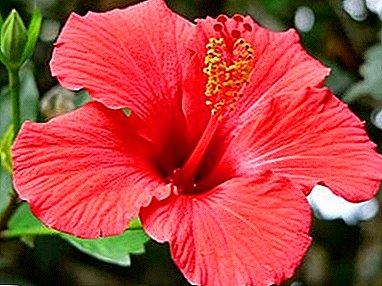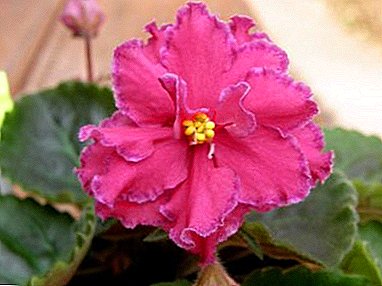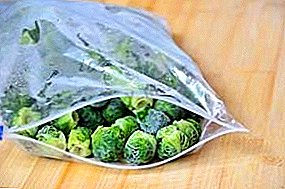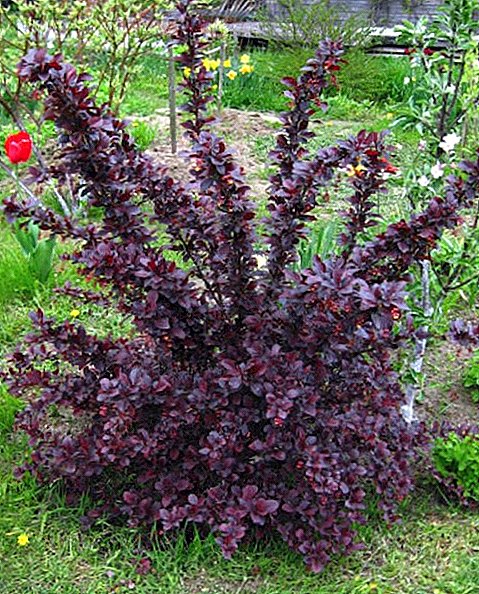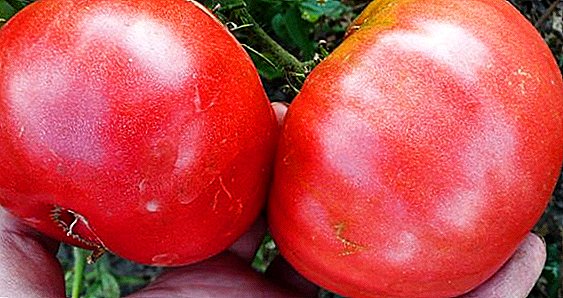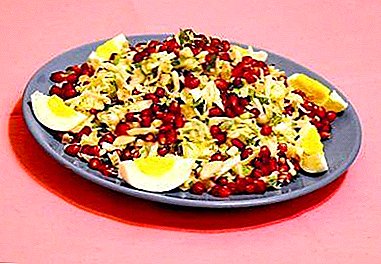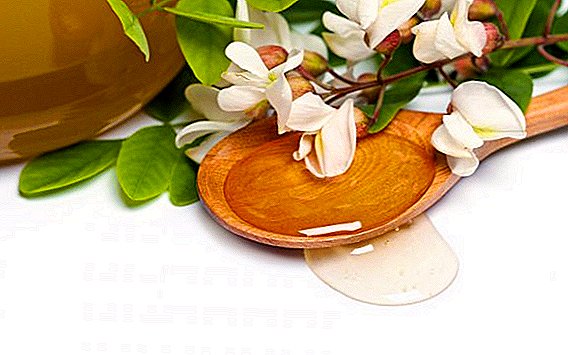 Honey - The most valuable product, which is familiar to almost everyone. Everyone knows that it is useful, but not many people know its useful properties and what positive results can be achieved by using acacia honey.
Honey - The most valuable product, which is familiar to almost everyone. Everyone knows that it is useful, but not many people know its useful properties and what positive results can be achieved by using acacia honey.
Brief description of acacia honey
 According to professional beekeepers, acacia honey can be both yellow and whitish - in nature there are yellow and white acacia honey plants (Robinia). They do not differ in useful characteristics, but white honey is thinner in taste. External characteristics of acacia honey: transparent, light, with a slight sourness and subtle floral aroma. Practically does not crystallize - the longest of all varieties (almost a year) remains liquid. However, after crystallization becomes milky white. Acacia honey has a pleasant, light, enveloping aftertaste with a hint of vanilla.
According to professional beekeepers, acacia honey can be both yellow and whitish - in nature there are yellow and white acacia honey plants (Robinia). They do not differ in useful characteristics, but white honey is thinner in taste. External characteristics of acacia honey: transparent, light, with a slight sourness and subtle floral aroma. Practically does not crystallize - the longest of all varieties (almost a year) remains liquid. However, after crystallization becomes milky white. Acacia honey has a pleasant, light, enveloping aftertaste with a hint of vanilla.
Important! Pure honey acacia honey does not have a bitterness.
Acacia Honey: Calorie, Vitamins, Minerals
Acacia honey contains not only vitamins A, B, E, H, K, but also a lot of useful elements:
- ascorbic, nicotinic, folic, pantothenic acid;
- fructose (42%);
- glucose;
- phytohormones;
- organic acids;
- flavonoids;
- nitrogen compounds;
- mono- and polysaccharides;
- potassium, iron, calcium, zinc, phosphorus and other minerals;
- copper, chromium, aluminum, manganese, boron, lithium, nickel, titanium, silicon.
Did you know? One bee has to fly around one and a half thousand flowers to collect 70 mg of nectar - this is how much a special goiter-pouch can hold.
In addition, acacia honey does not contain fat, although it does not differ in low calorie content (64 kcal per tablespoon of honey).
100 g of the product contains:
- proteins - 0.7 g;
- carbohydrates - 81.8 g;
- dietary fiber - 0.2 g;
- Fiber - 0.3 g;
- water - 17 g
How to check the quality and naturalness of acacia honey
 For the classification of honey using different parameters. First of all, all types of honey are divided into natural and artificial. Natural product is distinguished by color, the presence of air bubbles, pollen and other components. But the taste of natural honey depends on the natural conditions, the content of hives, etc.
For the classification of honey using different parameters. First of all, all types of honey are divided into natural and artificial. Natural product is distinguished by color, the presence of air bubbles, pollen and other components. But the taste of natural honey depends on the natural conditions, the content of hives, etc.
The form of natural honey is:
- Cell - the so-called honey raw. It is considered the cleanest. In addition, the wax in its composition can be eaten.
- Raw. In addition to wax, it may include pollen and other by-products.
- Liquid. Filtered honey. Pasteurization is often used to reduce the likelihood of crystallization.
- Dry - in the form of granules, flakes or powder. Very rare and most often contains special additives.
- Lump. As a rule, it is liquid honey with pieces of honeycombs.
- Crystallized - candied dense substance.
In addition, monoflora honey is distinguished - when not less than 51% of the nectar of the main plant is used for production. If honey is collected from different kinds of honey plants, it is called polyfluoric. Unfortunately, when choosing acacia honey, it is very simple to make a mistake: it does not crystallize for a long time in a fresh form, which is what unfair businessmen use when they add foreign elements (chalk, starch, etc.) to honey. And yet, natural acacia honey can be purchased if you know how to check it. 
So, a natural product from a fake will help to distinguish:
- Colour. Fresh acacia honey should be yellow or whitish, without excess turbidity and sediment.
- Aroma. This product has a light, but not a pungent smell, and a long aftertaste does not give bitterness. Counterfeiting is odorless and tastes like sweet water.
- Texture. Natural honey has a delicate texture. When rubbed quickly absorbed into the skin. A fake texture is tough, if rubbed between your fingers, such honey rolls into lumps.
- Viscosity. You can put a honey stick in it and pull it out. If honey is natural, it will reach for the wand, and when the thread breaks, it will sink to the surface, it will form a hill, which will even out with time. Counterfeit honey will either drain or drip from the stick.
- Iodine. If flour or starch is added to the honey, the product turns blue when this halogen is added. It is possible to use ammonia instead of iodine. If there is starch in the product, the honey and water solution will turn white, and a brown precipitate will appear at the bottom.
- Vinegar. It will help to recognize the presence of chalk in the product. A slight addition of vinegar will cause a hiss. To determine the maturity of honey, a spoon is lowered into it and they begin to rotate it. If honey is immature, it will drip off the spoon, while mature honey will wrap like a ribbon.
Proper storage of acacia honey
 In order for acacia honey to retain its healing properties, it must be stored in complete darkness. Glass containers with a tight-fitting lid are best suited for storage. Loosely closed honey fundamentally changes its specific weight and water content. When storing honey in an open container in a dry place, the water in it will decrease by 13-15%, and the weight will decrease by 4-5%. In a wet room, the open honey, on the contrary, absorbs moisture. So, at a humidity of 60%, mature honey can become watery and, as a rule, sour. In a dry room, honey can be stored at any temperature, but in a room with high humidity, the temperature should be no higher than +10 ° C. When storing, you should take into account such a property of honey, as the absorption of odors, so the storage space should be clean. Especially should be avoided such neighbors as cabbage, vegetables, herring, kerosene.
In order for acacia honey to retain its healing properties, it must be stored in complete darkness. Glass containers with a tight-fitting lid are best suited for storage. Loosely closed honey fundamentally changes its specific weight and water content. When storing honey in an open container in a dry place, the water in it will decrease by 13-15%, and the weight will decrease by 4-5%. In a wet room, the open honey, on the contrary, absorbs moisture. So, at a humidity of 60%, mature honey can become watery and, as a rule, sour. In a dry room, honey can be stored at any temperature, but in a room with high humidity, the temperature should be no higher than +10 ° C. When storing, you should take into account such a property of honey, as the absorption of odors, so the storage space should be clean. Especially should be avoided such neighbors as cabbage, vegetables, herring, kerosene.
Important! In no case can you store the product in a metal or galvanized dish - honey reacts with these elements and forms toxic salts. The exception is aluminum or stainless steel tanks.
The ideal container for storing honey - wood (preferably - lime). At the same time, it is necessary to take into account that coniferous trees will endow the product with a resinous aroma, aspen will make it bitter, and oak will make the color change. In suitable conditions, honey can be stored for a year - after that it partially loses its healing properties.
Medicinal and beneficial properties of acacia honey
 The active use of honey is based on its unique properties. Many people have used this product in alternative medicine. Today, the healing properties of acacia honey have been studied more deeply and rightfully put it on a par with the most active natural medicines.
The active use of honey is based on its unique properties. Many people have used this product in alternative medicine. Today, the healing properties of acacia honey have been studied more deeply and rightfully put it on a par with the most active natural medicines.
There are a number of reasons why acacia honey should be present in everyone’s house:
- due to the unique composition of honey is a powerful antibacterial, antiviral and antifungal agent;
- high iron content has a positive effect on the health of people with anemia. Increases hemoglobin, improves blood quality indicators, strengthens blood vessels and reduces pressure;
- honey has a favorable effect on the respiratory system and is recommended for the treatment of almost all diseases associated with the respiratory organs (can be used as an inhalation and inside);
- fructose allows you to use acacia honey in diabetes mellitus;
- trace elements promote digestion, help in the restoration of the stomach (in the treatment of ulcers);
- due to its high calcium content, honey improves the condition of nails and teeth;
- helps to cure cataract, glaucoma, conjunctivitis;
- helps with eczema, neurodermatitis, ulcers, wounds and other skin ailments;
- use honey and as an aphrodisiac - it increases the activity of sperm;
- strengthens the heart muscle, cleanses the bile ducts and liver;
- strengthens the immune and nervous system - normalizes sleep, relieves overexcitement, supports energy recovery.
And this is not the whole list of positive characteristics. In folk medicine, it is considered that it is better to use natural medicine, and in practice they prove that the acacia honey is still useful.
Important! When heat treated or heated, acacia honey loses its healing properties.
An adult can eat 100-150 g per day, breaking this rate into several doses. For better absorption, this product is recommended to be taken before meals (1.5-2 hours) or 3 hours after meals. It is advised to take honey with warm water, tea or milk.
The use of acacia honey in traditional medicine

Acacia honey - the only sweetness that is used in diets for weight loss. He brings undoubted benefit as additives to fermented milk products. You can also use it in various salads, add to puddings and porridges. However, there is a limit - no more than 2 hours of spoons per day.
For respiratory ailments
The soothing and anti-inflammatory properties of acacia honey will help relieve cough. After all, when it enters the body, honey acts in the image of dextromethorphan (the active substance in cough medicine). In addition, this sweet medicine "wraps" the throat with a protective film, thus preventing irritation.
Children who are sick often, it is recommended to eat a small portion of honey daily. The optimal time to receive a sweet mixture is at bedtime, half an hour. In case of sore throat and stomatitis with water and honey, rinse (as often as possible) the throat and oral cavity - this way they get rid of pathogenic microorganisms. Chamomile tea or soda can be added to the solution. If milk and badger fat are added to this composition instead of water, it can be taken orally to treat bronchitis.
Coughing, bronchitis, and pneumonia can be taken three times a day on the basis of honey expectorant. 600 g of honey is mixed with crushed aloe leaves (glass). Add to this mixture an infusion of linden flowers, birch leaves and 100 g of olive oil.
The benefits of acacia honey for the eyes
 Acacia honey is widely used for the treatment of eye diseases. With conjunctivitis, 25 g of honey is dissolved in 200 ml of boiled water and washed (dripped) with this eye solution - inflammation is well removed. The procedure is performed in the morning and at night for no longer than 30 days. You can use eye lotion with eye inflammation.
Acacia honey is widely used for the treatment of eye diseases. With conjunctivitis, 25 g of honey is dissolved in 200 ml of boiled water and washed (dripped) with this eye solution - inflammation is well removed. The procedure is performed in the morning and at night for no longer than 30 days. You can use eye lotion with eye inflammation.
With hypertension
With increased pressure, mix a glass of acacia honey with a glass of lemon juice, a glass of beet juice and juice of one lemon. You need to take this medicine for a month before meals. It is possible to reduce blood pressure simply by regularly taking 1-2 teaspoons - the pressure in this case will decrease gradually.
Did you know? Honey has the ability to neutralize alcohols. Giving a drunk person (whatever condition he is in) a tablespoon every 30 minutes, alcoholism can be cured. And the resulting aversion can make you stop drinking altogether.
How to use acacia honey in cosmetology
 Since honey is an excellent moisturizer, it can be used as an additional component for shampoos, balms and conditioners. And antimicrobial properties make it a major component in cosmetics. In addition, nectar (knowingly considered the drink of the gods) - a popular anti-aging component.
Since honey is an excellent moisturizer, it can be used as an additional component for shampoos, balms and conditioners. And antimicrobial properties make it a major component in cosmetics. In addition, nectar (knowingly considered the drink of the gods) - a popular anti-aging component.
The following honey masks are effective:
- For hair. ½ cup of honey and ¼ cup of olive oil mixed. Apply in small portions over the entire length of the hair for 30 minutes. Rinse with warm water and shampoo.
- From dandruff. Before washing, a 10% solution of honey is applied to the scalp for 3 hours. Repeat for 2 weeks. You can use this composition for dermatitis and fungal diseases.
- For body. 5 tbsp. tablespoons of acacia honey, 2 tbsp. spoons of rose oil and 2 cups almond oil mix. Apply to dry skin with massage movements.
- For face. 3 tsp of honey, 1 tsp of olive oil, 3 tbsp. spoon almond powder mixed in a non-metallic container. To rub into the skin with light movements (scrub principle) and rinse with warm water.
- Washing up In a liter of water, dissolve a teaspoon of honey and rinse your face with this water. Such a solution will give the skin additional nutrition, improve color and eliminate irritation and inflammation.
- In cosmetology, bee products and honey are used for compresses. To get rid of boils, ulcers and boils, a cloth dipped in honey solution is applied to them for 20 minutes (1 tbsp of honey per cup of linden flowers).
- Anti-aging mask. Acacia honey is mixed until smooth with olive oil and applied to the skin. Instead of oil for oily skin, honey should be mixed with egg white, and for normal skin, with banana gruel. Keep the mask for 20 minutes and rinse with warm water (so that there is no stickiness). It is advisable to tone the skin with a solution of calendula or chamomile.
The use of acacia honey in dermatology
 Disinfecting and anti-inflammatory properties allow the use of acacia honey for the treatment of skin diseases. For neurodermatitis, eczema and even psoriasis, honey lotions and an ointment based on it are used.
Disinfecting and anti-inflammatory properties allow the use of acacia honey for the treatment of skin diseases. For neurodermatitis, eczema and even psoriasis, honey lotions and an ointment based on it are used.
Did you know? Scientists can not say for sure how long honey exists on earth. In Spain, drawings dating from the 7th millennium BC, depicting beekeepers, were found. And some historians claim that there are fossils of several million years old, in which the remains of honey bees are imprinted.
Contraindications and possible harm from acacia honey
Despite the fact that acacia honey brings undeniable benefits, it can also cause harm. For example, honey is strictly not recommended to take in case of allergic reactions to bee products, as it can cause a runny nose, rash, scaling, itching and frustration.
You should also carefully take honey with:
- obesity;
- diathesis;
- diabetes;
- various lung diseases;
- acute myocarditis;
- overt heart failure;
- pancreatitis;
- acute gastritis.
By the way, pregnant women not only can eat honey, but also need it (albeit in limited quantities) - the beneficial properties have a positive effect not only on the health of mommy, but also on the body of the future baby.  1-2 teaspoons of acacia honey per day will protect against hormonal surges, tearfulness and irritations characteristic of pregnancy. In addition, this sweet medicine will prevent anemia and provide the body with important vitamins and elements. But during lactation, doctors recommend to refrain from the use of honey.
1-2 teaspoons of acacia honey per day will protect against hormonal surges, tearfulness and irritations characteristic of pregnancy. In addition, this sweet medicine will prevent anemia and provide the body with important vitamins and elements. But during lactation, doctors recommend to refrain from the use of honey.
Important! Children giving acacia honey should be carefully - their immunity is still unstable and can react unpredictably to the product. And up to two years to give honey to kids is strictly prohibited.
Choosing the right acacia honey, you get a whole pantry of medicinal substances that can be used for health and beauty.


